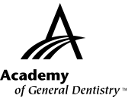|
Exercise No. 338
Subject Code: 017
Dental Materials
The 15 questions for this exercise are based on the article, “Effects of mixing technique on bubble formation in alginate impression material”, on pages 35-39. This exercise was developed by Merlin P. Ohmer, DDS, FAGD, in association with the General Dentistry Self-Instruction Committee.
|
Reading the article and successfully completing this exercise will enable you to:
- understand different alginate mixing techniques;
- understand the characteristics of alginate; and
- choose the best mixing technique to use in your dental practice.
|

